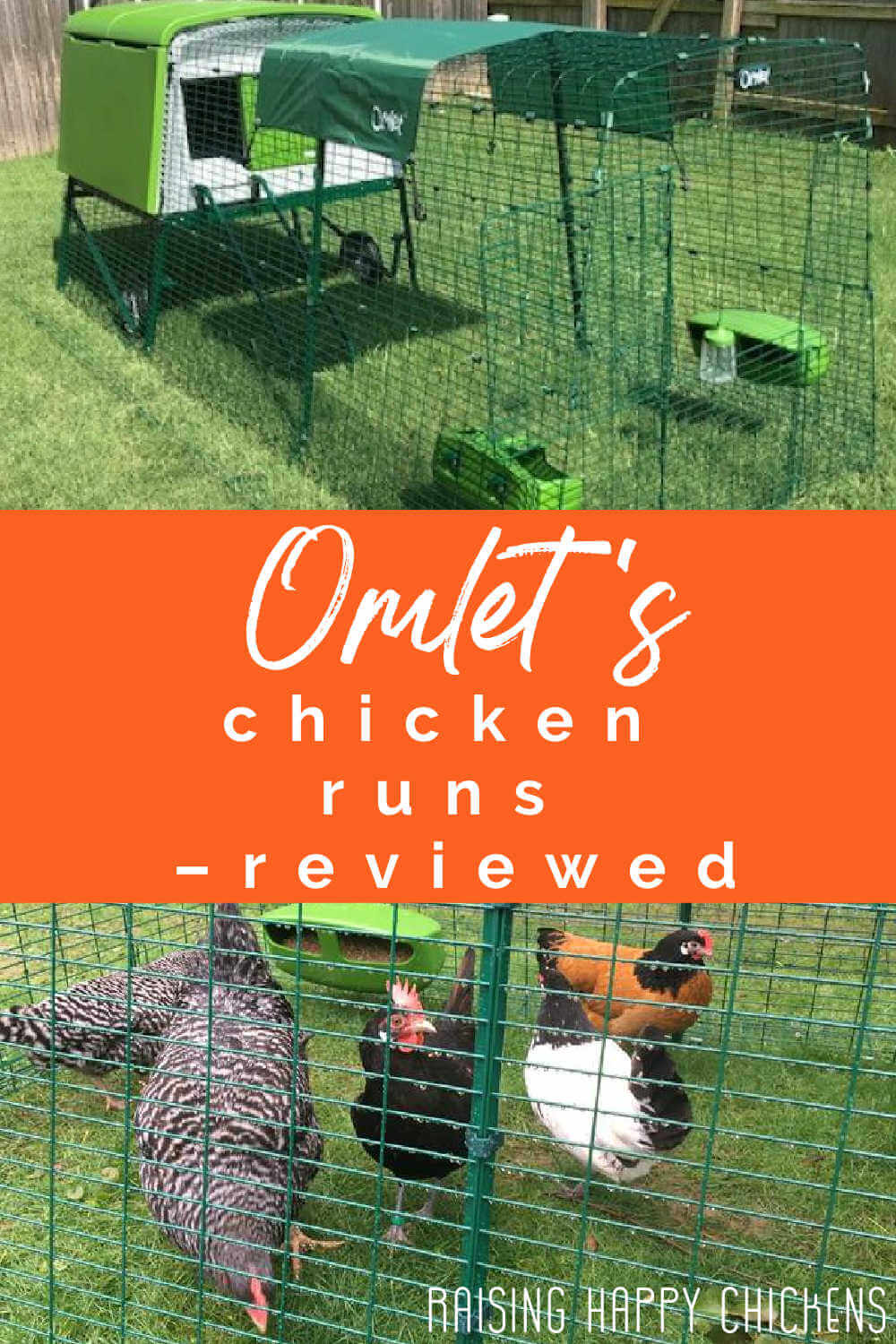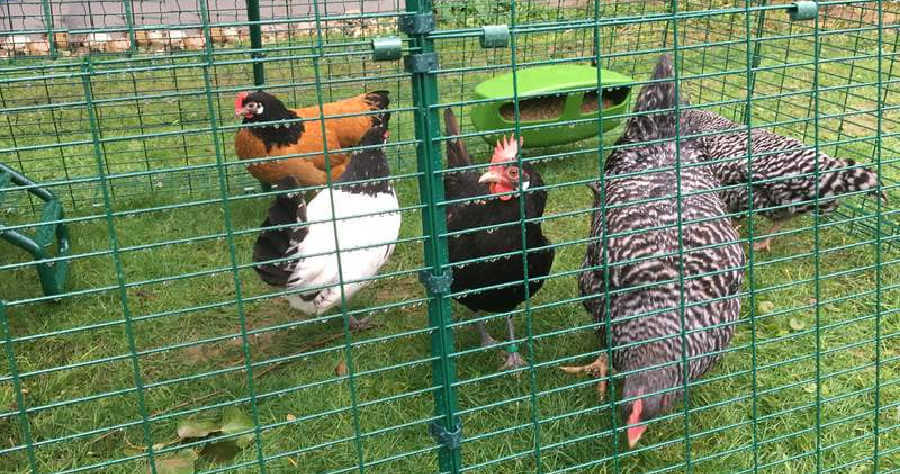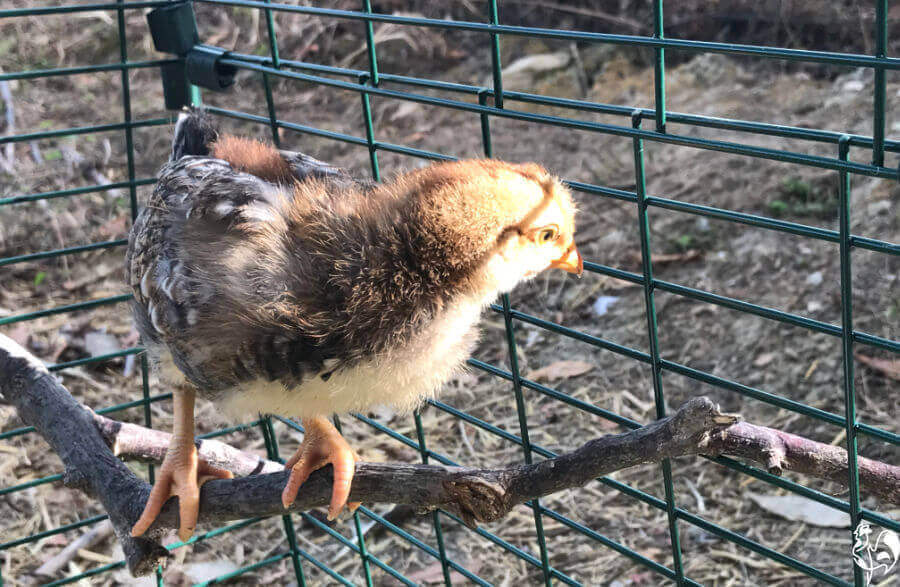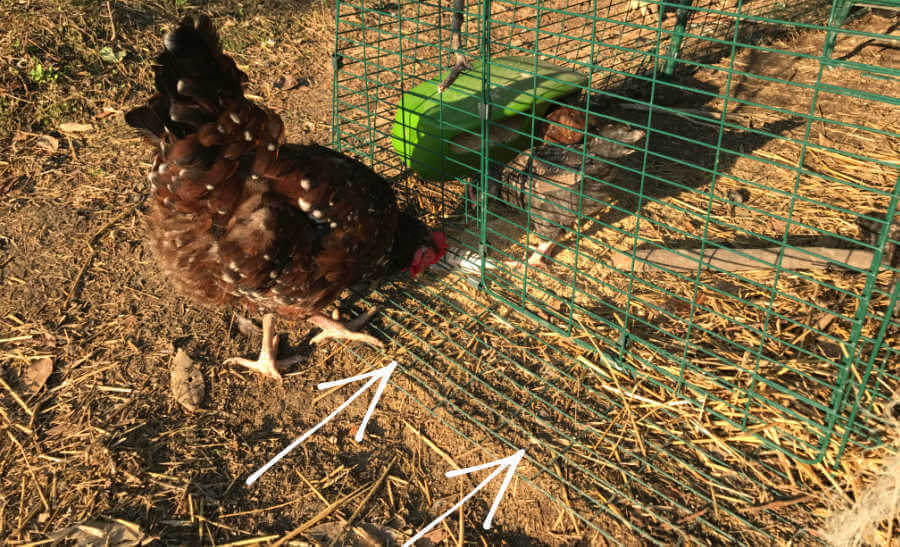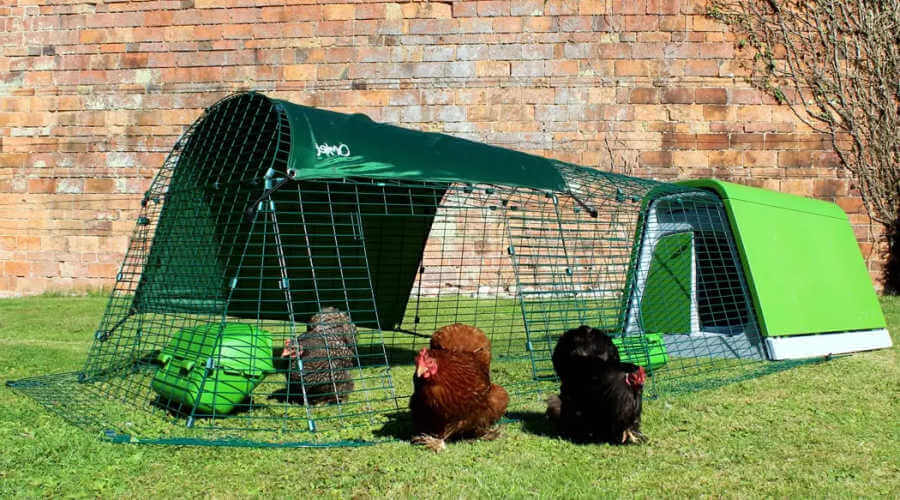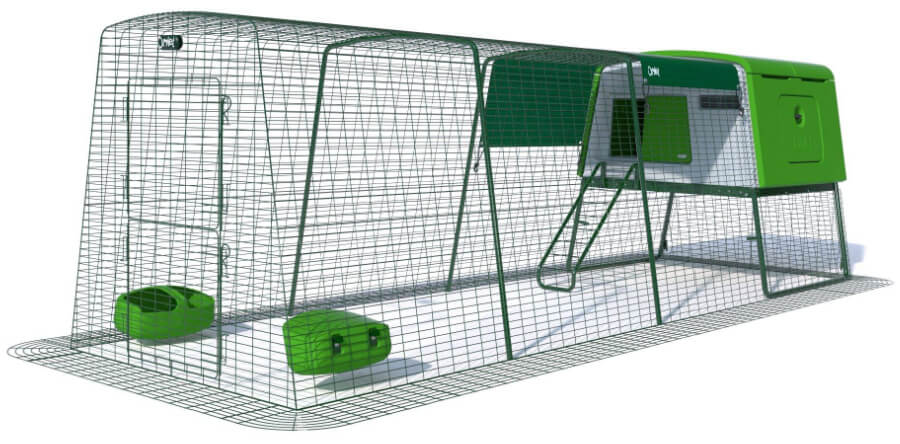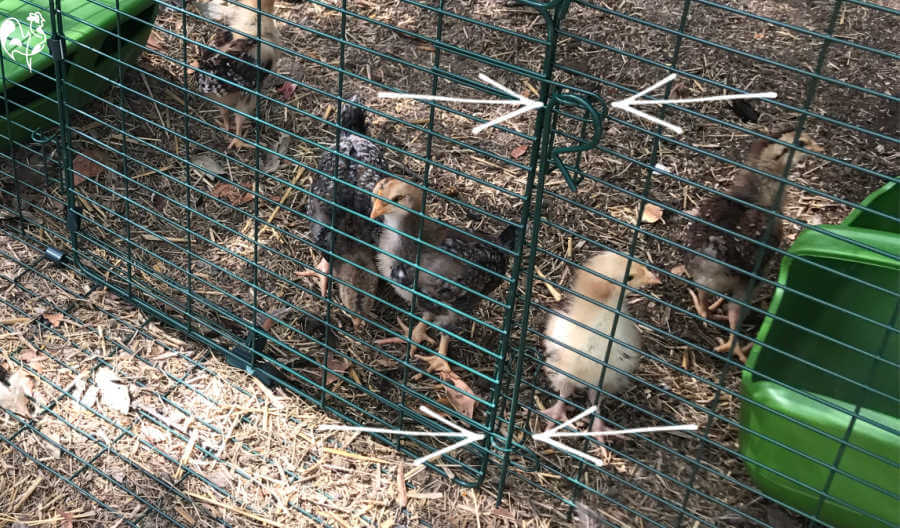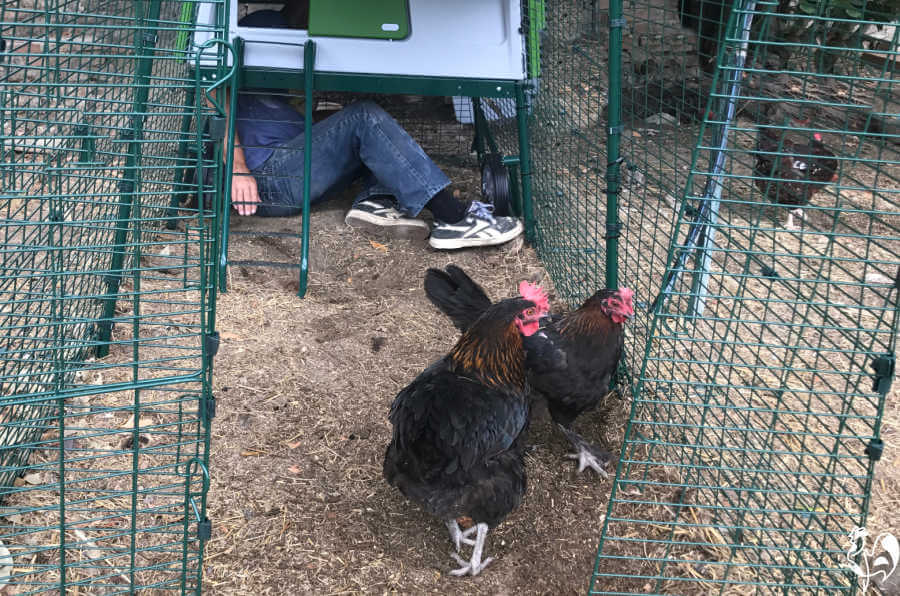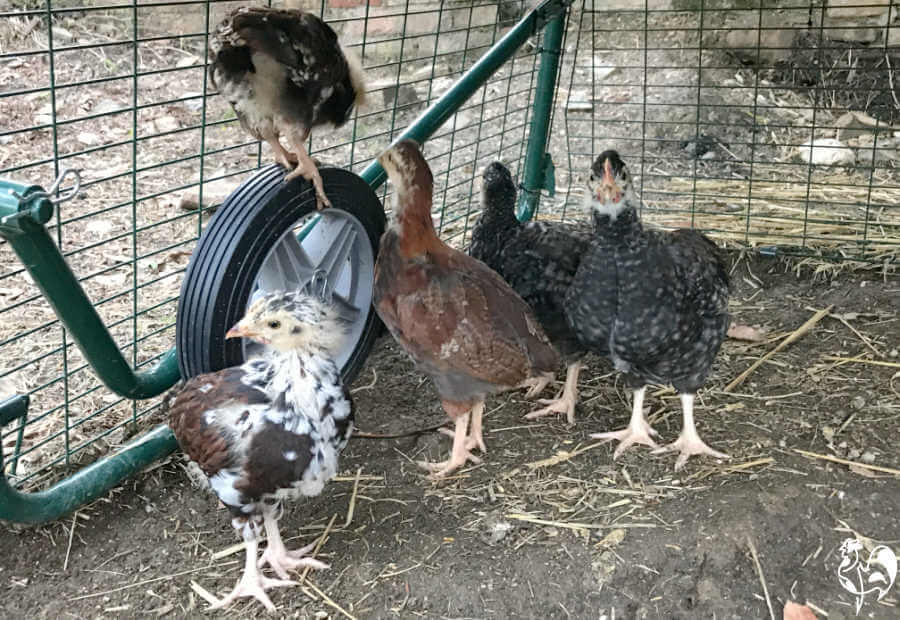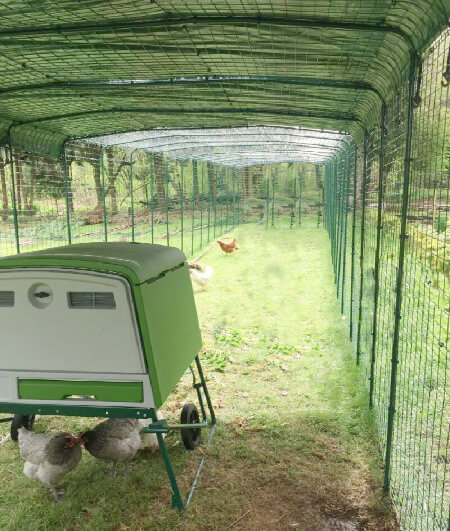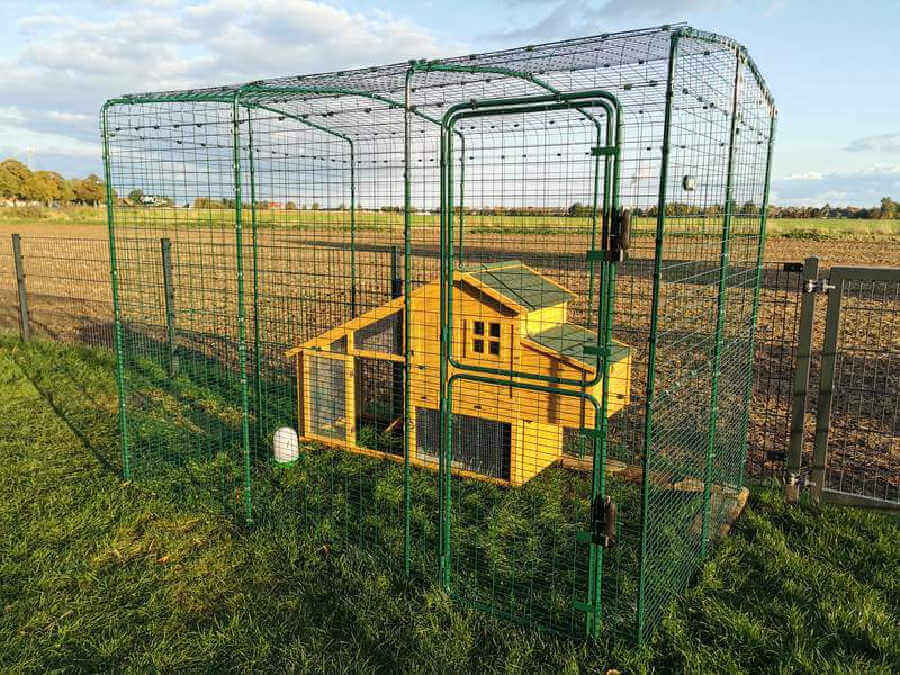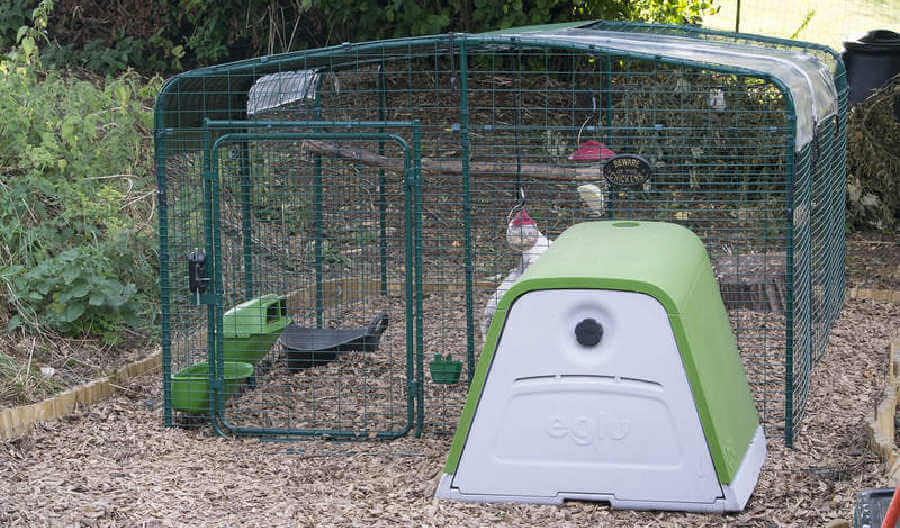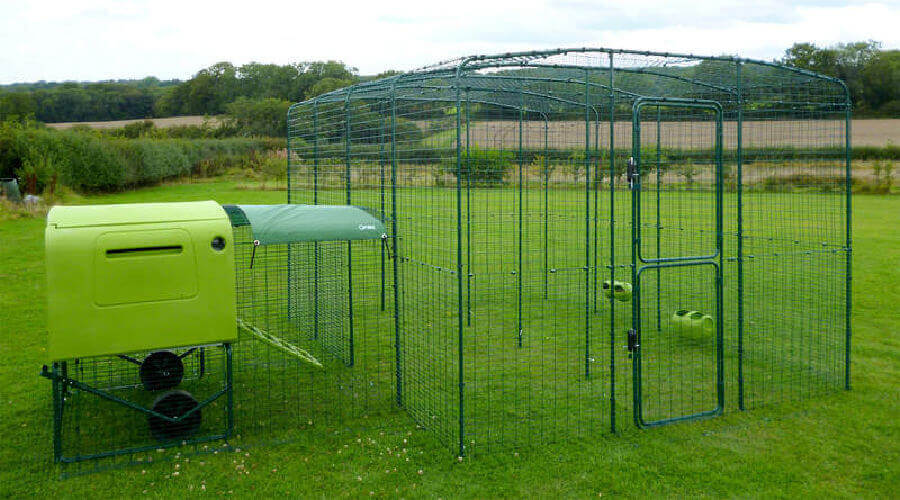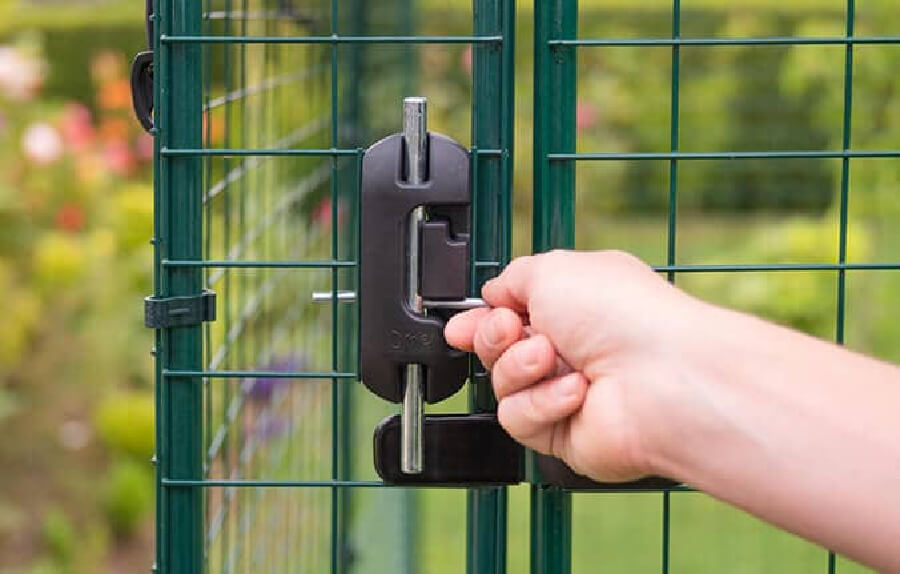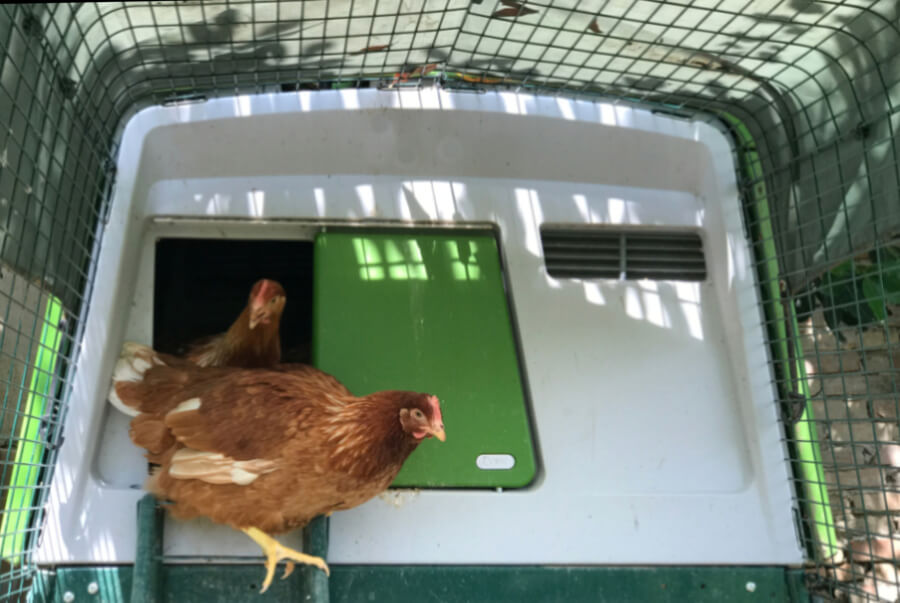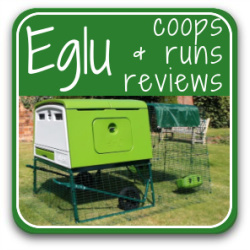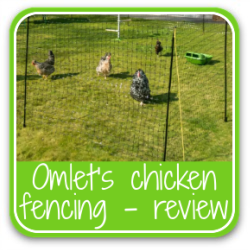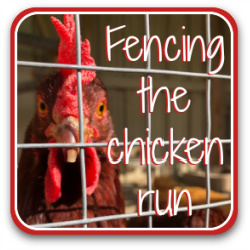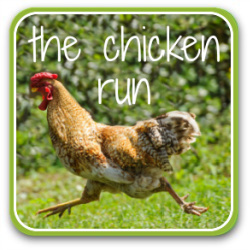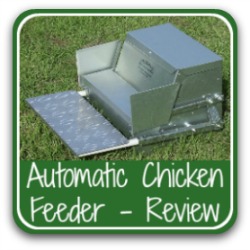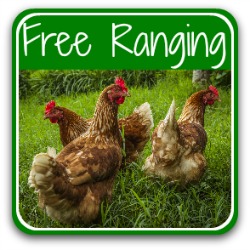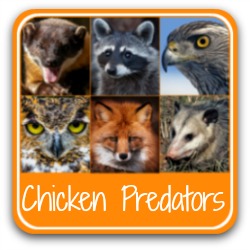The Omlet chicken run: benefits, features and a review of value for money.
Looking for a safe, predator-proof chicken run?
Free range might be most people's idea of the ideal environment for chickens. But there can be major problems in keeping the flock safe from predators.
Even allowing them to range when you're outside with them is tricky. Foxes, for example, bide their time and then move in for the kill very quickly.
So the run is one of the most important assets we can provide to protect our flock – and one of the most difficult to find.
Omlet's chicken runs are among the best.
In this article, I use my own experience of Omlet's different types of run and compare them against best practice for a safe, healthy environment(1) and the agreed welfare standards for chickens(2).
To do this, we'll look together at...
- what size of chicken run you need
- security
- small runs for the urban garden
- Omlet's chicken tractor style runs
- walk-in runs
- covers
- summary and recommendations.
How do they compare? What are the pros and cons of each? And which run will best suit your individual requirements?
If you purchase any product through links on this page I receive a small commission at no cost to you. I was not paid for writing my reviews, and I did not receive any of these runs as a freebie. I'm suggesting them for you simply because I own and love them, and I think you would, too. For more information please see this policy.
To go to Omlet's site, click any of the photos on this page, or any of the dedicated buttons.
How big should the run space per chicken be?
As an absolute minimum, each chicken should be allowed one square metre (about 11 square feet) in the run. For smaller breeds like the Silkie, you may calculate slightly less and for large breeds like the Jersey Giant, allow more.
But that's the absolute minimum. Double those numbers is preferable, even more if you have the space.
"Chicken math(s)" is a recognised phenomenon – the burning need to own many, many more chickens than you ever thought you'd have!
But don't be tempted to get more chickens just because you have more room in your run. Your chickens will be much happier, and much less likely to transmit disease within the flock, the more space they have.
Omlet's chicken runs: design and security.
Keeping our chickens safe from predators is one of the most stressful struggles we face. Having a predator-proof run is critical to alleviating that stress.
For large areas, a purpose-built fenced space is the answer. But for smaller sites, particularly in urban areas, a well constructed enclosure is essential. Chicken wire just isn't adequate.
How do Omlet's chicken runs match up for predator-proof-ness?
Welfare standards state that a run should...
"...provide protection against wild animals. This should also ensure that your chickens can't escape or become trapped or injured."(1)
All Omlet's chicken runs – both those made specifically for the Eglu coop and their stand-alone runs – are constructed of the same material and to the same design.
- The metal is a strong, heavy duty steel mesh, subjected to rigorous testing and successfully protecting from predators for more than 15 years.
- The gaps between bars differ between the smaller and walk-in runs. In the smaller runs which attach to Eglu coops, the gap measures 50mm x 75mm (2" x 3"). It's small enough to keep the smallest of chicks in, and the larger of predators out.
- The metal is covered in a plasticised, weather-resistant coating which both protects chickens from harsh edges, and makes the run weather-proof in even the most extreme conditions.
- Mine has been outside for about seven years in temperatures of over 40ºC (104ºF) in summer and below -10ºC (14ºF) in the snow and rain of winter.
- As you can see in the photo above, it's still showing no signs of wear. As a precaution I check it each year to make sure it remains in good condition. But apart from cleaning off dirt and leaves it's been maintenance free.
- Additionally, all the runs come with an anti-digging "skirt" which attaches to the bottom and runs in an 'L' shape along the ground for 15cm (6").
- Covering the skirt with dirt or grass means digging predators won't be able to access the run.
- Doors are a favourite access point for predators. The doors on Omlet runs vary according the type of run, so I cover those below: here for the smaller Eglu runs and here for the large, walk-ins.
- Runs should also offer "adequate protection from overhead predators"(2). All Omlet's runs include a roof made to the same specifications as the rest.
Any drawbacks of the Omlet chicken run design?
- The space between the bars, although small, is large enough to allow snakes and, potentially, rodents to enter the run.
- It's easy enough to add some fine mesh to the lower bars. It does make it essential to remove food containers at night, unless using something like an automatic Grandpa's feeder.
Omlet's small chicken runs.
These are the runs which attach to the Eglu chicken coops. Their dimensions can be changed to suit your Eglu and the space you have available.
The smallest run for any of the coops measures 6 feet (1.8 metres); the largest is 13 feet (4 metres) – although it's possible to simply keep adding sections to the length you require.
This is the Eglu Go (the smaller of the coops) with a 6 foot (1.8 metre) run...
... and this is the larger Eglu Cube, which I own. This run is both longer (13 feet; 4 metres) and, because the coop is sitting on a stand, is higher, at 3' 10" (117 cm).
The Eglu Go run, because it's lower, has a single door opening while the Cube has a double "stable" type door. The top and bottom can be opened together or separately.
I've found that especially useful if I just want to add some treats into the run – I can open the top of the door so I can place the treats without the chickens escaping!
The door latching system is worth mentioning, because it's predator proof. Even the raccoon, a master of picking locks, won't be able to work this one out!
On the run's static side at each door opening there are two small, metal hoops: one at the top and another towards the bottom of the door. See the right-hand arrows on my run photo, below.
The door has a latch which fits over those hoops. A metal rod then slots into the hoop – the left-hand arrows.
Which means nothing will be able to either open the door, nor squeeze between the two hoops – the rod holds the door tight closed.
It's one of my favourite features.
Omlet's smaller chicken runs: Pros.
- No run is entirely predator-proof, but Omlet chicken runs are as close as it's possible to get.
- They attach securely to the front and sides of any Eglu coop.
- The dimensions can be changed to suit your available space. Just add more sections for a bigger run!
Any drawbacks to these runs?
- I had problems positioning mine because the land it's on slopes and is very uneven. I did it, but it took time and a lot of patience. It would be much easier on a flat surface.
- Since I bought mine, Omlet have produced a different way of securing the runs to the ground, which seem much more secure. See them here.
- Because they're not very tall – the Eglu Cube's run comes in at just under 4 feet – it can be hard to get hold of any chickens who decide to stay out of the coop for the night. Mine take great delight in running into the space right at the back, underneath the Cube.
- It means that one of us has to crawl into the run and retrieve the chickens. Which can be funny if you're watching; not so funny if it's pouring with rain and you're the one having to crawl along a 13' run!
As you can see from Mike's attempts to round up two of my Black Copper Marans hens!
Omlet's version of the chicken tractor run.
What is a chicken tractor?
A chicken tractor type run is simply one that can be moved about. They come in various designs, from the simple wooden frame which can be dragged, to the more elaborate with wheels and handles.
It's called a "tractor" because the chickens will scratch up the surface and "till" the top inch or so of earth below – like a tractor, but with no need for gas or a driver!
Omlet's chicken tractors.
Omlet turn their runs into large chicken tractors by adding wheels and handles to the Eglu Go Up and Eglu Cube coops and runs.
The special lever system means the run lifts and is held without any strain on the person moving the coop.
Take a look at Omlet's short video to see how this works.
Pros of the Omlet tractor-style runs.
- Like all tractor style runs, being able to move the Omlet tractor means it can satisfy the welfare requirement to: "allow wet, muddy or barren areas to be sectioned off to recover and to minimise the risk of disease, while still allowing enough space for chickens to roam on good pasture".(1)
- This is the setup I have, and I'm able to move the large Eglu Cube coop plus a four metre run by myself – even though my site is on a slope.
- And – my chickens always like using the wheels as a play area!
Any drawbacks?
- It does mean you need to remove the pins holding the "skirt" to the ground. But that's an easy task, and really not a problem, given the benefits of being able to move the coop and run together.
Omlet's large walk in chicken run.
Full disclosure: Omlet's walk-in run is my personal ultimate aim. As yet I haven't been able to get it – the land my chickens have is on a steep, uneven slope, and this large run does best on a flat or almost flat surface.
So all the images of this run are brought to you courtesy of Omlet. As soon as I have evened out my land and have my own walk-in run, I'll be sure to substitute the photos.
Click on any of the photos to see Omlet's large walk-in runs page. As with other links on this page, they are all affiliate links.
- The walk-in is not only the largest, it's also the most customisable of all Omlet's runs. It can be built at one or two panels high (1 metre / 3' 9" or 2 metres / 6' 8"); two or three sections wide (2 metres / 6'8" or 2.7 metres / 9'); and as long as you want!
- Sections are securely held together with custom-made clips which are plentiful enough to ensure the sections hold together securely.
- This run, by an Omlet customer, is two sections high, two wide and 18 metres (59 feet) long! It could easily be sectioned off partway down the length with a partition section. That would allow used ground to recover, or house new chickens before they mix with the rest of the flock.
- The full length door (1.5 metres / 5'11" high) can be placed anywhere except right next to an attached Eglu.
- If you only want one section high, the door is 0.6 metre / 2'11" high. Bear in mind, though, that having only one section high means that at just over one metre (4'), it's not comfortably a walk-in run.
- This Omlet run is so versatile that it can be used with any stand-alone coop, or attached to one of Omlet's Eglu designs.
- Here, a stand-alone wooden coop placed inside the walk-in run both provides the chickens with more space, and increases security.
- The customer photo below shows the Eglu Go, without a stand, connected directly to the walk-in run. Placing the coop outside the run increases the space the chickens have to scratch and dust-bathe.
And below is an Eglu Cube with its stand, linked to the walk-in run with a connection kit.
The possibilities are almost endless!
The walk-in run door.
The latch on the walk-in door is impressively anti-predator. Even raccoons, who are skilled at opening most locks, will have trouble with this.
The steel bar, which fits into a steel bracket, has to be moved to the side at the same time as slid up or down.
Omlet's large walk-in runs: advantages.
- Omlet's walk-in runs are perfect if you want to give your flock a secure "hen city" with plenty of space.
- They can be used with any coop, not only the Eglu.
- Can be accessorised with custom-made perches and toys.
- So easy to use – the height makes it a real pleasure to spend quality time with your chickens – there's and no need to hurt your back persuading them home to roost!
Any drawbacks of the Omlet walk-in runs?
- Connection of the different sections is time-consuming (but not difficult).
- Although gaps in the lower mesh are small (2cm x 7cm / 0.9" x 2.9"), the upper half and roof mesh has wider gaps (48cm x 7cm / 19" x 2.9"). It would probably be too high for rodents, but it would be accessible by snakes. If snakes are a predator in your area you'd need to wrap those panels in a cover, or smaller mesh.
- Not being able to move the run means land can quickly turn to mud.
- Best sited on flat ground, although the new strong plastic screw-in pegs make it much easier and more secure than the old tent-style pegs.
Covering Omlet's chicken runs.
Some of the major recommendations of the welfare requirements for chickens talk about providing cover, for example:
- a shaded area must be accessible which ... offers adequate protection from inclement weather and overhead predators and has sufficient space that the chickens do not have to crowd together (thereby risking further heat stress)(1)
- outside feed and water should be sheltered to keep it clean and dry, and to avoid attracting rodents and wild birds(2).
The point about wild birds is particularly important, since it's known that wild birds carry Avian Influenza, which is fatal to chickens.
So it's a definite bonus that there's a wide range of custom made weather protection covers for all the Omlet runs.
I have one of these for my Eglu Cube run, and it's a positive benefit. It provides shade in summer, and a buffer from the wind and snow in winter.
It attaches to the run with strong elastic and bungee hooks, and can be used to cover the top or sides as necessary.
Building them.
If you're concerned that these walk-in runs may be complicated to build, take a look at Omlet's short demonstration video.
It really is that easy!
Omlet chicken runs: summary.
Eglu coops and smaller runs...
- Choose the Eglu Go or Go Up with a small run if you have a smaller garden and are planning a flock of three or four hens
- If you want a flock of up to eight or ten hens, the Eglu Cube with a larger run is your answer
- Add as many length sections as you have room for, to make sure your chickens have adequate space
- If financially viable and you have a smaller space, use either of the Eglu coops with wheels (that is, the Eglu Go Up or the Cube with wheels and handles), making a tractor easily moved around.
Any coop with a walk-in run...
- Expensive, but by far the best choice if you have a large enough garden
- The walk-in runs can be made large enough for any size flock – you're only limited by the size of your coop
- The combination of an Eglu Cube and a walk-in run would be my choice. The main drawback is not being able to move it around, which will result in the ground being turned quickly to bare earth, and mud in rainy or snowy areas.
If you've read any of my other product reviews, you'll know that I have a "Golden Egg Award" where one egg means "don't go near this product!", and five means "get out there now and buy it!"
How many golden eggs do Omlet's chicken runs merit?

A Fantastic Four Golden Eggs!
I've removed one egg, simply because:
- the space between the bars won't be enough to keep out snakes – an additional layer of mesh should be added if these are a problem for you
- if your land is not completely flat, they're more difficult (though not impossible) to put up
- they're expensive – although it's an investment, as they last for years.
Apart from that, they're a fabulous product which I can't recommend highly enough.
Where to buy.
- Very occasionally you can find these runs, pre-owned, on sites such as eBay and Craigslist. Be careful to make sure they're not damaged before you buy.
- Beware of cheap imitations. Omlet's runs are expensive for a reason – their materials and manufacturing processes are of a very high quality.
- My recommendation is to buy direct from Omlet. The company distribute all these runs worldwide and offer a 30 day, no questions asked returns policy.
Related articles you may find useful.
Sources.
A lot of "facts" you'll find on the internet are often people's individual views, based on inaccurate information repeated from poor quality sources.
The information I provide in this article and others is based not just on my own experience, but on evidenced facts from scientific, peer-reviewed research and books from highly respected and experienced poultry keepers such as Gail Damerow.
Some of the trusted sources I have used in this article are these.
1. Royal Society for the Prevention of Cruelty to Animals: Best environment for keeping chickens. Pub. RSPCA, updated 2022.
2. Royal Society for the Prevention of Cruelty to Animals: Welfare standards for chickens. Pub. RSPCA, 2002.
3. Damerow, Gail: Storey's Guide to Raising Chickens. 4th edition, pub. Storey, 2017.
- Home
- Omlet's Coops
- Run designs
